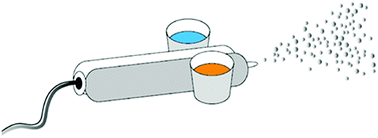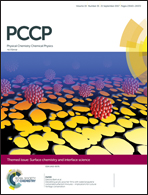Formation of titanium dioxide core–shell microcapsules through a binary-phase spray technique
Abstract
Core–shell microcapsules consisting of a titanium dioxide shell and a hydrophobic solvent core have been prepared with diameters of a few micrometers and a narrow size distribution using a simple and fast airbrush technique. These microcapsules were prepared at room temperature in a single-step process in which an oil with a dissolved titanium alkoxide precursor was forced together with an aqueous solution, containing a surface-active polymer, through a narrow spray nozzle using a nitrogen gas propellant. Several different parameters of chemical, physical, and processing origin were investigated to find an optimal recipe. Two different alkanes, one ketone, and four alcohols were tested and evaluated as core materials, alone or together with the antifungal biocide 2-n-octyl-4-isothiazolin-3-one (OIT). Long-chain alcohols were found suitable as core oil due to their low solubility in water and surface activity. The addition of the surface-active polymers in the water phase was important in aiding the formation and stabilization of the titanium dioxide shell. An impressive loading of 50 wt% of the semi-hydrophobic OIT was possible to encapsulate using this simple and applicable procedure.

- This article is part of the themed collection: Surface chemistry and interface science


 Please wait while we load your content...
Please wait while we load your content...